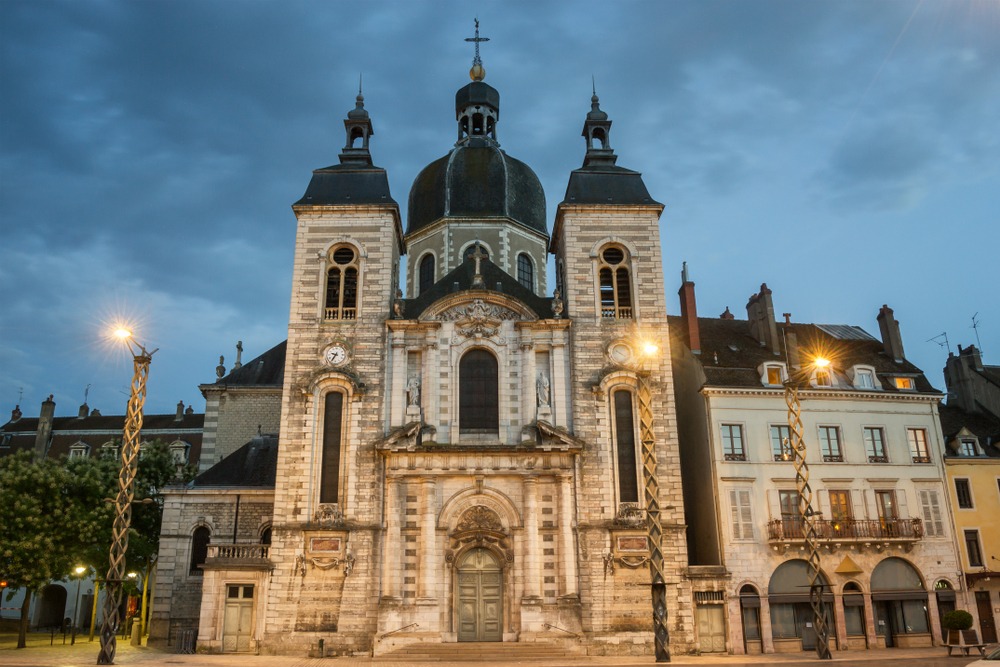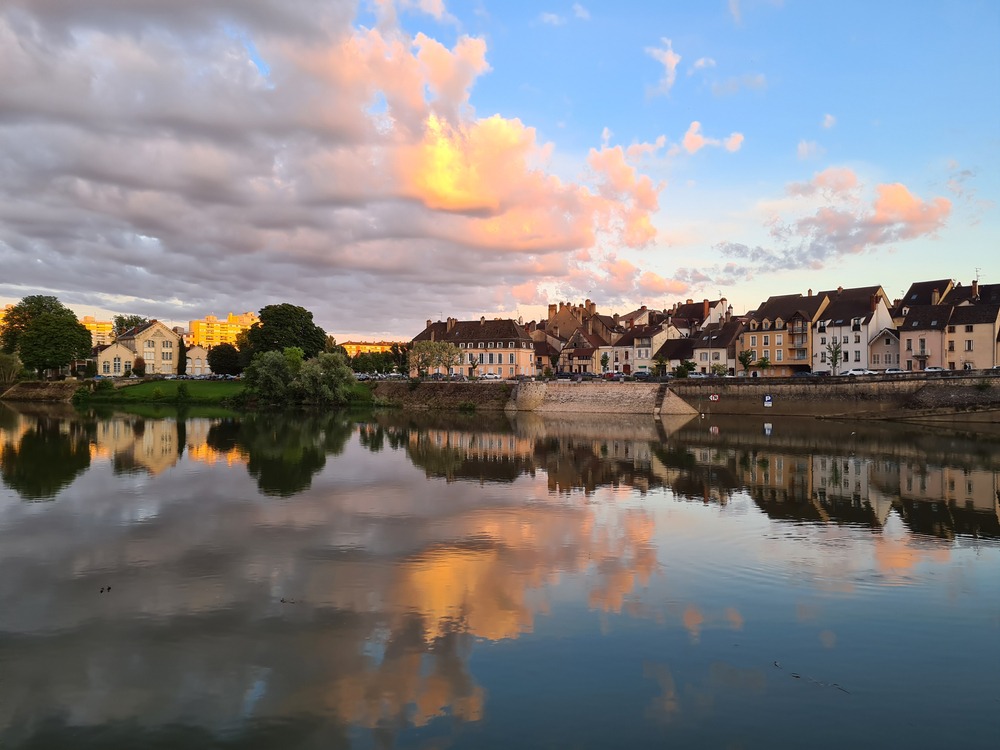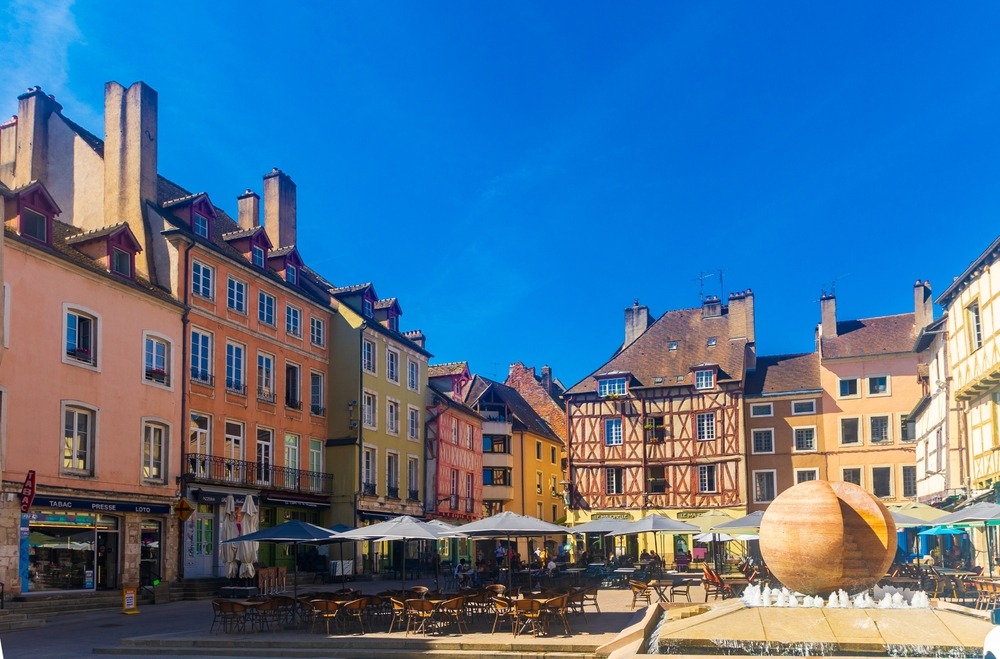Chalon-sur-Saône, France: A Historic Crossroads on the Saône River – History and Top 25 Attractions

A DETAILED HISTORY OF CHALON-SUR-SAÔNE
Pre-Roman and Roman Foundations
Chalon-sur-Saône, located in the Burgundy region of eastern France, has a history stretching back over two millennia. Its early settlement was by the Aedui, a powerful Gallic tribe, who established a strategic riverside community known as Cabillonum along the Saône River. This location, at the confluence of major river and land trade routes, made the town a center for commerce, cultural exchange, and political importance even before the Roman conquest.
When the Romans took over Gaul, Cabillonum was integrated into the Roman road network and flourished as a regional hub. It became a strategic port and administrative center, playing an essential role in riverine transport between Lyon and northern Gaul. Roman Chalon featured thermal baths, a forum, villas, and a network of aqueducts. The legacy of Roman urban planning still influences the city’s layout today.
Early Christianity and Medieval Significance
By the 4th century CE, Chalon had become a Christian bishopric, and its ecclesiastical importance continued for centuries. The town played a key role during the Merovingian and Carolingian periods, hosting synods and serving as a residence for bishops and counts. Its bishops were influential within the broader structure of the Church and often acted as power brokers in the region.
During the early Middle Ages, Chalon-sur-Saône was frequently caught between regional feudal powers. Yet, it retained its importance thanks to its river port, which facilitated trade in wine, grain, salt, and textiles. By the 13th century, Chalon was fortified and prospered under Capetian rule. It was also a site of pilgrimage and religious life, with abbeys, monasteries, and churches flourishing.
Renaissance to Revolutionary Era
The city continued to grow during the Renaissance, especially with the expansion of viticulture and river trade. The Saône River allowed Chalon to become an active commercial city, with its timbered houses, warehouses, and bridges supporting a vibrant economy.
However, the Wars of Religion in the 16th century and the later upheaval of the French Revolution disrupted local life. The Revolution dissolved many religious institutions, repurposing their buildings for civic uses and leading to the secularization of public spaces.
Birthplace of Photography: Nicéphore Niépce
Chalon-sur-Saône’s most significant modern contribution to global culture came in the early 19th century when Nicéphore Niépce, a local inventor, pioneered photography. In 1826 or 1827, Niépce created the first permanent photograph using a process he called heliography—forever changing the world. His home and legacy are preserved in the city, which proudly celebrates its role as the cradle of photography.
19th and 20th Century Industrialization and Growth
As France industrialized, Chalon emerged as an important industrial and logistical center, particularly for river navigation, metallurgy, and railway transport. During both World Wars, Chalon’s strategic location made it a point of interest, though it escaped the heavy bombing experienced by larger cities.
The post-war period saw modernization and expansion of infrastructure, educational institutions, and cultural venues. Today, Chalon-sur-Saône remains a vibrant riverside city known for its cultural events, architecture, and historical contributions.

TOP 25 ATTRACTIONS IN CHALON-SUR-SAÔNE
1. Musée Nicéphore Niépce
Dedicated to the inventor of photography, this fascinating museum showcases early cameras, photographic techniques, original heliographs, and rotating exhibits exploring the evolution of visual media.
2. Cathédrale Saint-Vincent
Located in the heart of the old town, this Romanesque-Gothic cathedral features an intricately sculpted 15th-century façade, beautiful stained glass, and a richly decorated interior. Its origins date back to the 8th century.
3. Place Saint-Vincent
This historic square adjacent to the cathedral is lined with half-timbered buildings, bustling cafés, and a lively market atmosphere. It is the cultural heart of the city.
4. Old Town (Vieille Ville)
Wander narrow cobbled streets, admire medieval houses, and enjoy the authentic ambiance of Chalon’s preserved historic core. Highlights include 16th-century facades, small artisan shops, and atmospheric courtyards.
5. Maison des Vins de la Côte Chalonnaise
Located near the Saône River, this wine center offers tastings, exhibitions, and information about the rich viticultural heritage of southern Burgundy.
6. Quai des Messageries
A riverside promenade ideal for walking, biking, or sitting beside the Saône. It offers picturesque views of historic bridges, moored boats, and passing barges.
7. Tour du Doyenné
A remnant of a once-powerful church complex, this medieval tower now serves as a viewpoint and exhibition space with sweeping vistas over the old town.
8. Musée Vivant-Denon
This museum, named after Dominique Vivant Denon (Napoleon’s art advisor and first director of the Louvre), offers archaeological finds, art collections, and local history displays in a beautifully restored 18th-century building.
9. Église Saint-Pierre
A neoclassical church from the 18th century, with a bright, harmonious interior and impressive organ. It is located near the Saône and often hosts concerts.
10. Parc Georges Nouelle
This landscaped public park features floral gardens, water features, and shaded paths. It’s a favorite for families and those seeking quiet moments.
11. L’Abbaye de la Ferté (nearby)
A short drive from Chalon, this former Cistercian abbey was founded in 1113 and is one of the four founding abbeys of the Cistercian order. Visitors can admire its tranquil setting and historic ruins.
12. Pont Saint-Laurent
This stone bridge connects the historic center with the Saint-Laurent Island neighborhood. Dating to the 11th century, it has been rebuilt over time and offers views of both riverbanks.
13. La Péniche
A floating cultural venue moored on the Saône, La Péniche hosts concerts, theater, and cabaret events aboard a converted barge.
14. Théâtre Piccolo
A charming small theater offering contemporary performances, children’s shows, and cultural programming year-round.
15. Market Days at Place Saint-Vincent
Held several times a week, the open-air market features local produce, cheeses, meats, crafts, and flowers, creating a sensory feast of Burgundian culture.
16. Le Port de Plaisance
The city’s marina, where yachts and leisure boats dock, offers rental services, scenic walks, and waterside dining options.
17. Le Bastion Boulanger
A preserved section of Chalon’s medieval fortifications, this bastion is now a green space and provides insight into the city’s former defenses.
18. Maison des Orphelins
A historic building that once housed orphans, reflecting the city’s social and religious care infrastructure during the early modern period.
19. Caves de Buxy (short drive away)
A wine cooperative in the nearby village of Buxy offering cellar tours and tastings of Chardonnay and Pinot Noir from the Côte Chalonnaise.
20. The Saône River Cruises
Board a riverboat for a relaxing cruise that explores the beauty of Burgundy’s waterways, including locks, countryside, and wildlife.
21. Église Notre-Dame de Saint-Laurent
A peaceful Romanesque church on the island of Saint-Laurent, featuring unique carved capitals and intimate medieval ambiance.
22. Chalon dans la Rue Festival
One of France’s largest street arts festivals, held every July. The entire city becomes a stage for circus, theater, music, and dance performances from artists around the world.
23. Maison de l’Oratoire
An elegant 17th-century building that once belonged to the Oratorians, now used for cultural exhibits and concerts.
24. Local Vineyards and Wine Roads
Chalon is at the northern edge of the Côte Chalonnaise wine region. Visitors can explore scenic vineyards, tasting rooms, and vineyard trails by car or bike.
25. Sculpture Trail and Public Art
Modern sculptures and art installations are placed around the city, blending contemporary creativity with historic surroundings. Look for pieces in parks, squares, and along the river.

Chalon-sur-Saône is a hidden gem in the heart of Burgundy—steeped in history, enriched by artistic legacy, and defined by its deep connection to the Saône River. From its Roman origins and medieval bishopric to its groundbreaking role in photography, the city exudes a layered charm. Whether you’re captivated by cathedrals and cobblestones, eager to taste Burgundian wines, or drawn to riverside relaxation and cultural festivals, Chalon-sur-Saône offers a rich and authentic French experience in every season.

































